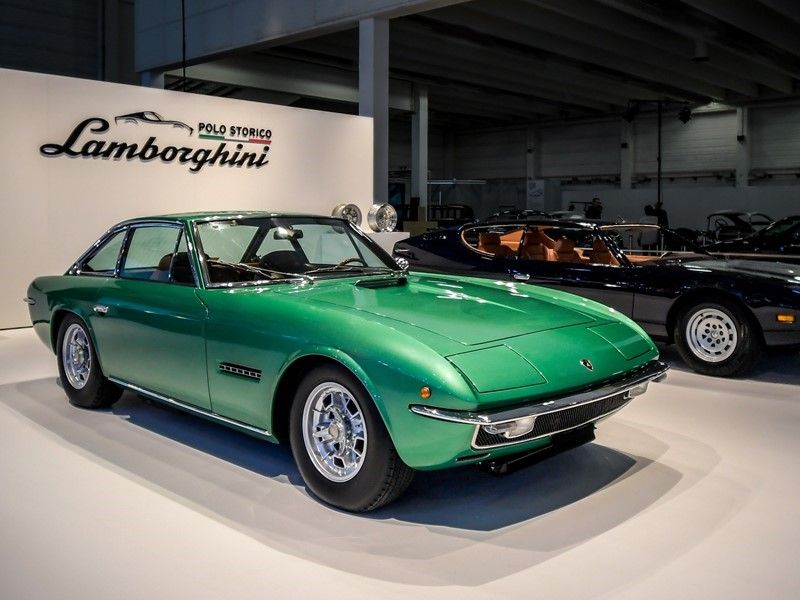
LAMBORGHINI POLO STORICO HAS COMPLETED THE RESTORATION OF THE ISLERO AND THE ESPADA THAT BELONG TO THE LAMBORGHINI MUSEUM AND ANNOUNCED A TOUR DEDICATED TO THESE TWO MODELS
Sant’Agata Bolognese, July 23, 2018 – This year marks the 50th anniversary of Automobili Lamborghini’s Espada and Islero models. To mark this momentous occasion, Lamborghini Polo Storico, the division devoted to the House of the Raging Bull’s historic cars, has completed the restoration of the Islero and the Espada that belong to the Lamborghini Museum and announced a tour dedicated to these two models, scheduled to take place in Italy, September 7-10, 2018.
The Espada was the first series production four-seater model in the history of Lamborghini. Of all the marque’s historic cars, it also boasts one of the highest numbers of units produced: 1,226 during its 10-year production run. The Espada’s characteristic lines are the fruit of a design by Marcello Gandini for Carrozzeria Bertone. It sits very low to the ground (standing at little less than 1.20 meters high) but is nevertheless extremely spacious.
The Espada was produced in 3 series: Series I (until January 1970), consisting of 176 units, Series II (until 1972), consisting of 578 units, and Series III, the last (until 1978), with 472 units. It was equipped with a longitudinal, front-mounted 4.0-liter (3,929 cc) V12 engine, with dual overhead camshafts, ranging from 325 to 350 CV, depending on the series and technical specs, and powered by 6 twin-barrel Weber carburetors, for a maximum speed of approximately 245 km/h. It was the first Lamborghini to be offered, on request, in a version with automatic transmission.

The Islero – whose official name was initially the Jslero – was produced from 1968 to 1970 in two versions: the Islero and, for 1969, the Islero S. The Islero was based on the 400 GT, but revised for larger tires and a wider wheel gauge. To top it off, its body was designed by Mario Marazzi of Carrozzeria Marazzi. It was equipped with a longitudinal, front-mounted 4.0-liter (3,929 cc) V12 engine with dual overhead 320 CV (350 CV on the S) camshafts per cylinder bank, and powered by 6 twin-barrel Weber carburetors, for a maximum speed of approximately 250 km/h (260 km/h for the S version). It is a very rare model. Only 225 units were produced: 155 under the name Islero and 70 with the name Islero S.
The 50th anniversary celebrations of the Espada and the Islero will culminate with a tour in Umbria (September 7-11, 2018), organized by Polo Storico Lamborghini. The schedule, which sees collectors driving their cars for more than 650 kilometers along some of the most renowned roads in central Italy, features the city of Perugia as the center of activities for the tour’s first days. From there, the cars will pass through and pay visit to the city’s cathedral and museums (including the chocolate museum), in addition to the region’s most important local wineries.
On Sunday, the tour continues to Assisi, then travels on to Tuscany, for an overnight stay in the Chianti area. On Monday, the ‘convoy’ will cross the Apennines, travel through the Mugello, then journey over the legendary Futa and Raticosa Passes to arrive in Sant’Agata Bolognese, the home of Automobili Lamborghini. Here, participants will visit both the factory where modern super sports cars are made, including the latest model, the Urus, and the headquarters of Lamborghini Polo Storico.
Source: Lamborghini
Photographs: Lamborghini






